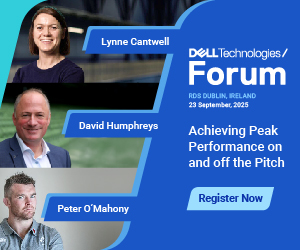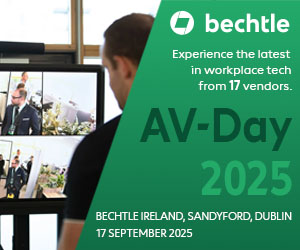There was plenty of hype and numbers surrounding this year’s Dublin Web Summit, the sixth instalment of what has become one of Europe’s largest technology events. Try this on for size: 4,000 visitors, 250 companies, 200 CEOs, 188 speakers, four stages with very different audiences. In a sense large events like the Web Summit and Mobile World Congress show just how vast technology has become that developers and designers; start-ups and enterprises; moneyed and anonymous VCs and penniless Internet rock stars mix, barely skipping a beat. Technology is not just hardware or software it is business philosophy, marketing – an entirely new group of humanities with better business sense. As one speaker put it: "in the seventies kids got together to form bands; now they form companies". I disagree. These days kids are just as happy to join a Coder Dojo than learn an instrument and write apps and games instead of songs. The proof was on stage when four participants (all under the age of 13) took to the stage to talk about their experience at after school coding clubs.
Elsewhere I found the mood to be upbeat with an even split of Irish and international start-ups. If there were two themes to be taken from the range of ideas on the exhibition floor they were ‘mobile’ and ‘social’. From betting websites to niche networks and accountancy services hosted in the cloud, almost everything had an app to complement it or leverages existing social networks to provide new insight into trends across the Web.
Companies like SumUp showed off mobile payment solutions including a credit card scanner and app for iOS devices. In social, Busy Moos is an Irish social network for women that promotes the collection and sharing of information about their favourite shops, businesses and services shared with their peers. Newswhip introduced Spike, a new product presenting trending news and video in real time across territories and topics from showbusiness to politics.
In cloud I was taken with Jolicloud, a virtual desktop solution that syncs apps as well as personal data. I can see it working well for people who use more than one PC and want a degree of continuity in their experience.
There were a few let-downs as well. The quality of interviewing was patchy and high profile guests like Barry Sonnenfeld were particularly poorly served by ill-researched questions. At only 20 minutes apiece the panel discussions, often consisting of four speakers and a moderator, failed to take flight due to time constraints and came off as a bare introduction to the topic at hand and what each contributor’s company does without any real debate. The future of news debate in particular was a strangely bloodless affair that never had the chance to get going.
In other cases speakers were moved from their allocated spots on the printed schedule at short notice, leaving many unable to plan their visit properly.
If the Web Summit has taught us anything it’s that the Internet has turned technology from an industry into a culture. Like its subject, the Summit is not perfect but it is well-connected and will get better. The Web Summit proves that the Internet isn’t about platforms and technology; it is a canvas just waiting to have content splashed upon it. A little more controversy would add some colour.








Subscribers 0
Fans 0
Followers 0
Followers